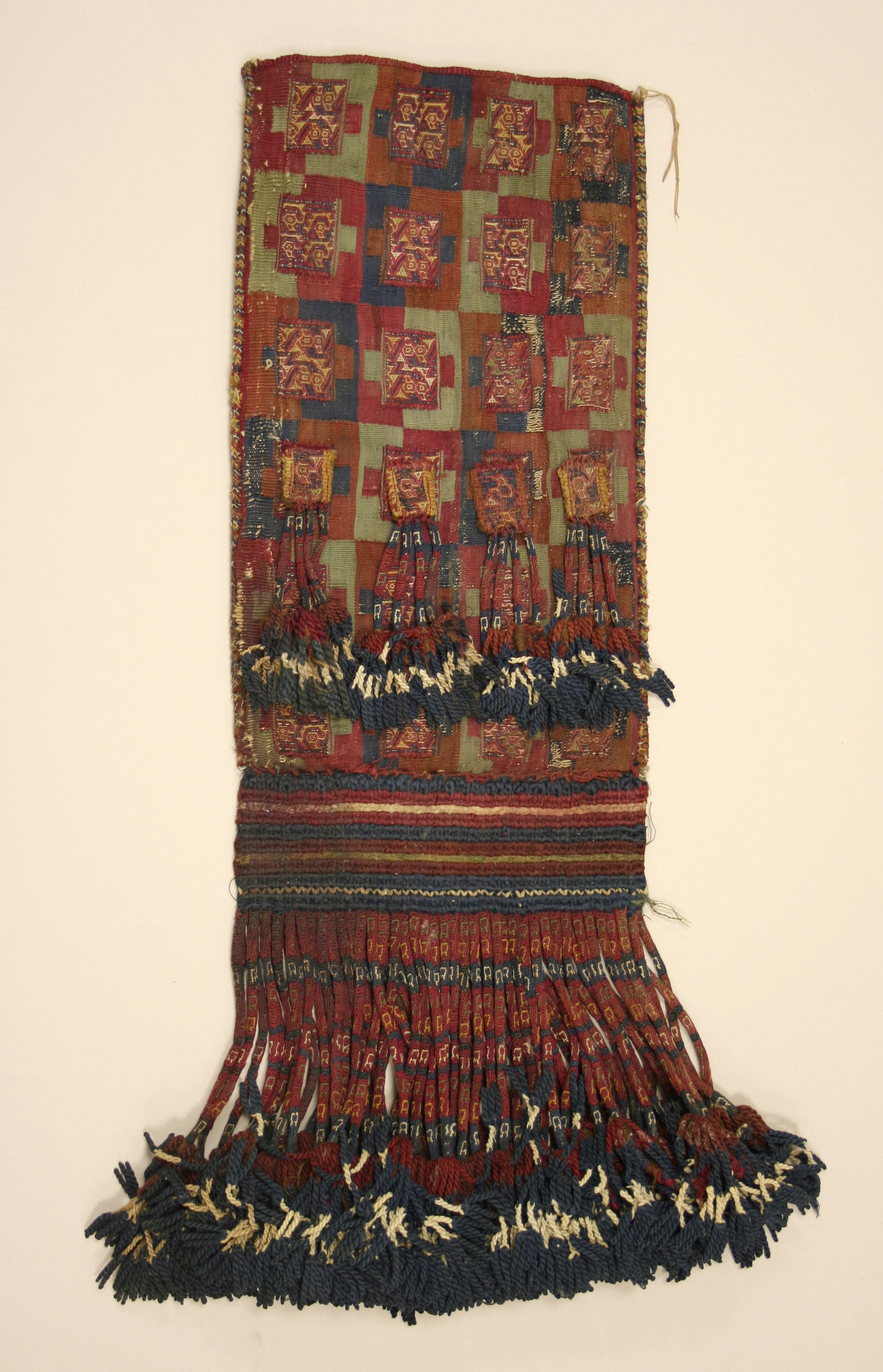Bag with fringe
This fringed bag, intended to carry coca leaves, was made by weavers of the Chuquibamba culture, which preceded (and later coexisted with) the Inca Empire in what is now the Department of Arequipa in southern Peru. The bag was woven with both cotton and camelid fibers using yarns dyed in blue, red, green, and orange to form a repeating pattern of stacked rectangles divided into two colors with a geometric pattern in the center of each rectangle. Over these, rectangles with bird motifs, created by weft-patterned weaving, were inserted. The body of the bag was woven as a single unit, folded, and the sides sewn closed. A second striped textile was subsequently attached at the bottom and decorative tassels were added to both the body of the bag and along the bottom. The small white threads hanging from the top right corner are probably the remnants of a cord used to tie the bag closed.
The practice of chewing coca leaves goes back more than 8,000 years in Peru (Dillehay et al., 2010), and high-status individuals would carry the leaves in finely woven bags such as the present example. Chewing coca leaves with quicklime or ash releases cocaine hydrochloride which quickly enters the circulation and produces a mild narcotic effect (Plowman, 1984). The drug is believed to provide energy and mask hunger (Plowman, 1984). In present-day traditional societies, chewing coca leaves is an important element of both social and religious rituals (Sharratt, 2014).
References and Further Reading
Dillehay, Tom D., Jack Rosen, Donald Ugent, Anathasios Karathanasis, Víctor Vásquez, and Patricia J. Netherly. “Early Holocene Coca Chewing in Northern Peru.” Antiquity Volume 84 (326) (2010), pp. 939-953.
Dransart, Penelope. “A Highland Tradition from the Far South of Peru During the Period of Inka Domination.” In PreColumbian Textile Conference VIII/ Jomadas de Textiles PreColombino VIII, edited by Lena Bjerregaard and Ann Peters, pp. 137-156. Lincoln, NE: Zee Books, 2020.
Frame, Mary. “Chuquibamba: A Highland Textile Style.” The Textile Museum Journal 37-36 (1997-1998), pp. 3-48.
Sharratt, Nicola. Carrying Coca; 1,500 Years of Andean Chuspas. New York, NY: Bard Graduate Center, 2014.
Tessier, Chloé. “Les Conflits d’Interprétation de l’iconographie des Textiles Préhispaniques de Chuquibamba, Pérou.” In Controveres et Différends Textuels, Actes du Colloque Sens & Representation en Conflit, edited by Karsten Forbig and Chloé Tessier, pp. 217-229. Brussels, Belgium: Peter Lang, 2012.
Due to rights restrictions, this image cannot be enlarged, viewed at full screen, or downloaded.
This artwork is meant to be viewed from right to left. Scroll left to view more.



